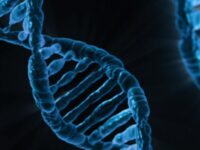The ocean surrounding the Windmill Islands of East Antarctica is polluted, and an ecological research station is to blame. The pollution jeopardizes some of the most unique ecosystems on the planet — and scientists’ ability to study them. It’s a stark warning to the other hundred research stations at the South Pole, and now, the question among the Antarctic scientists: How do they reverse the damage they created?
Casey Research Station opened in 1969 as a data collection base studying the structure, geology, and glaciological process of the East Antarctic ice sheet. But by 1997, they had mishandled so much waste that the surrounding marine sediment was contaminated beyond international guidelines for sediment quality, found Jonathan Stark, the chief investigator for the Casey Research station, and his lab.
For its first 11 years, the center dumped its waste either directly into the ocean or into landfill sites. Their garbage included ice vehicle parts, batteries, metal, plastics, rope, construction materials, asbestos, cement, rubber, drums of unidentified waste chemicals, and waste oils.
It wasn’t until the Protocol on Environmental Protection to the Antarctic Treaty was established in 1980 that Casey started monitoring how they disposed of their waste. The treaty prohibited all research stations within a designated area from degrading “areas of biological, scientific, historic, aesthetic or wilderness significance.” Since their disposal practices had “significant adverse effects on air or water quality,” they had to change their practices — and fast.
From then onward, researchers at Casey have been working hard to study, reduce, and properly dispose of the waste they create, and their efforts are still ongoing. The station now exports most of its waste out of the Antarctic. From 2003 to 2004 the station removed and transported 1,800 cubic meters of waste material and contaminated soil to Australia.
“For its first 11 years, the center dumped its waste either directly into the ocean or into landfill sites. Their garbage included ice vehicle parts, batteries, metal, plastics, rope, construction materials, asbestos, cement, rubber, drums of unidentified waste chemicals, and waste oils.”
They have also created meltwater trenches, which capture melting snow, preventing it from running through the waste disposal site and carrying dissolved metal contaminants into the ocean. And any wastewater the station produces is filtered to remove metal contaminants before they pump it into the waters.
But simply limiting future contamination isn’t enough. Stark’s lab found that sites with increased levels of deadly pollution are less biodiverse. And despite all they are doing to mitigate the effects of prior waste dumping, Stark and his team of researchers conclude in their study that “Antarctic research stations such as Casey are likely to pose a moderate level of long-term ecological risk to local marine ecosystems through marine pollution.” And with the 112 research stations located in Antarctica, there is a lot of waste contaminating its waters and icy terrain.
Some research stations are trying to reverse the damage, not just mitigate it. Martínez Álvarez and his coauthors conducted a study analyzing how they could remove hydrocarbon contaminants — a class of chemical compounds found in gasoline and kerosene — from waters on either side of the Antarctic. They showed promising results, but they were unpredictable. In the study’s first year, they successfully removed three-quarters of the hydrocarbon, but in the second year, it dropped to around half.
Incidents like the one at Casey are not isolated, and many research facilities at the poles pose long-term threats to the very environment they are studying. Even today, with waste management regulations made to mitigate pollution, research sites are taking up precious land and resources. Without reversing the damage to the Antarctic, it may harm the unique and precious ecosystems not found anywhere else on the planet.






